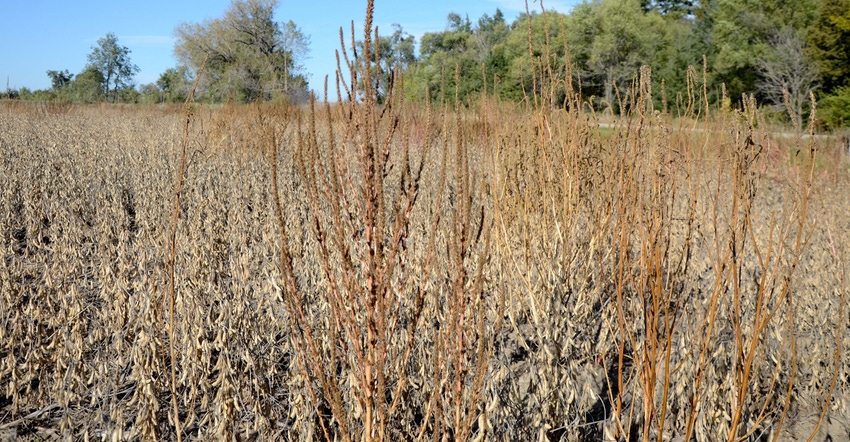December 4, 2017

Two years ago, I wrote a column with a suggestion for a New Year's resolution: avoiding the "tragedy of the commons" by adopting a zero-tolerance policy in weed control — and to maintain technology's effectiveness.
To the credit of Nebraska farmers, many have adopted a no-tolerance policy of their own accord long before I moved to this state. And many have had to step that policy up a notch in the last couple years, as Palmer amaranth has spread onto more and more Nebraska fields.
Palmer amaranth isn't exactly new to Nebraska. Research conducted by the University of Nebraska-Lincoln shows over 25 pigweed populations in Nebraska as of 2015, including Palmer amaranth, which has been here since the 1800s.
But if you drove across south-central Nebraska this fall, the signs were all too clear that the weed is spreading, with Palmer-infested soybean fields, alfalfa fields, and in some cases, cornfields and roadside ditches. Meanwhile, a number of growers have reported Palmer amaranth in fields farther north than they've found it before.
"In the last two to three years, we've seen more Palmer amaranth spreading particularly in the west-central and south-central parts of Nebraska," says Amit Jhala, Nebraska Extension weed management specialist.
And this year, there were a number of escapes after herbicide applications — likely due to high temperatures and access to moisture, Jhala notes.
Recently, UNL researchers at the South Central Ag Lab near Clay Center put this to the test, cultivating Palmer plants in two growth chambers at different temperatures — one at 92 degrees F and another at 75 degrees.
"In the 92-degree growth chamber, the Palmer was growing 2 to 2.5 inches every single day compared with 75-degree temperatures, where it was growing between 0.5 to 1 inch every day," says Jhala. "The high temperatures we had this year helped Palmer grow, and if you miss your application window by three days, the plant will be 6 inches taller. When a Palmer amaranth plant is taller, your herbicide efficacy is reduced, especially in soybeans where we use more contact herbicides."
Resistant weeds spread by a number of ways, but it comes down to two primary methods: seed and gene flow. The challenge with Palmer amaranth is that not only is it a dioecious species that can spread resistance directly to other plants through pollen, but a single female plant can produce between 100,000 to half a million seeds — seeds that can spread through manure and by combines.
Research shows Palmer amaranth can reduce yields by up to 79% in corn and up to 91% in soybeans, depending on populations in the field.
Many growers have changed their management accordingly.
In fact, a number of growers this year resorted to hiring rogueing crews to manually remove problematic pigweeds like Palmer amaranth. Some even left end rows — and in a few rare cases, entire fields — unharvested to prevent the spread of resistant Palmer seed. "This year and last year was the first time I heard about rogueing crews in Nebraska soybean fields," says Jhala.
However, there's still plenty of room for improvement. The "tragedy of the commons" concept illustrates that the proper management of 99% of the population can be foiled by the mismanagement of the remainder. And weed control is a prime example. This year, maybe it's time for an updated New Year's resolution: taking the zero-tolerance policy up a notch to keep Palmer amaranth from spreading.
"I think some are using these practices but not all. I can understand their problem. Right now, prices aren't great and growers are trying to save money, but choosing the right herbicide is a big payoff if you use the right program," Jhala says. "We've done some economic analyses, and in two years of study, we've seen more profit from using a good preemergence program with multiple effective modes of action, compared to a single postemergence application, because you're eliminating weeds effectively and increasing yield."
You May Also Like




